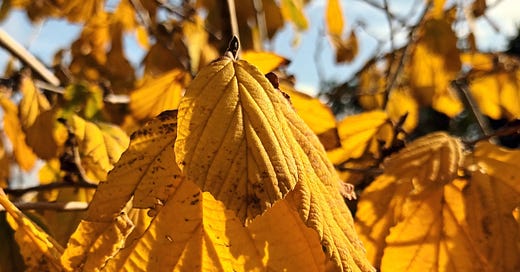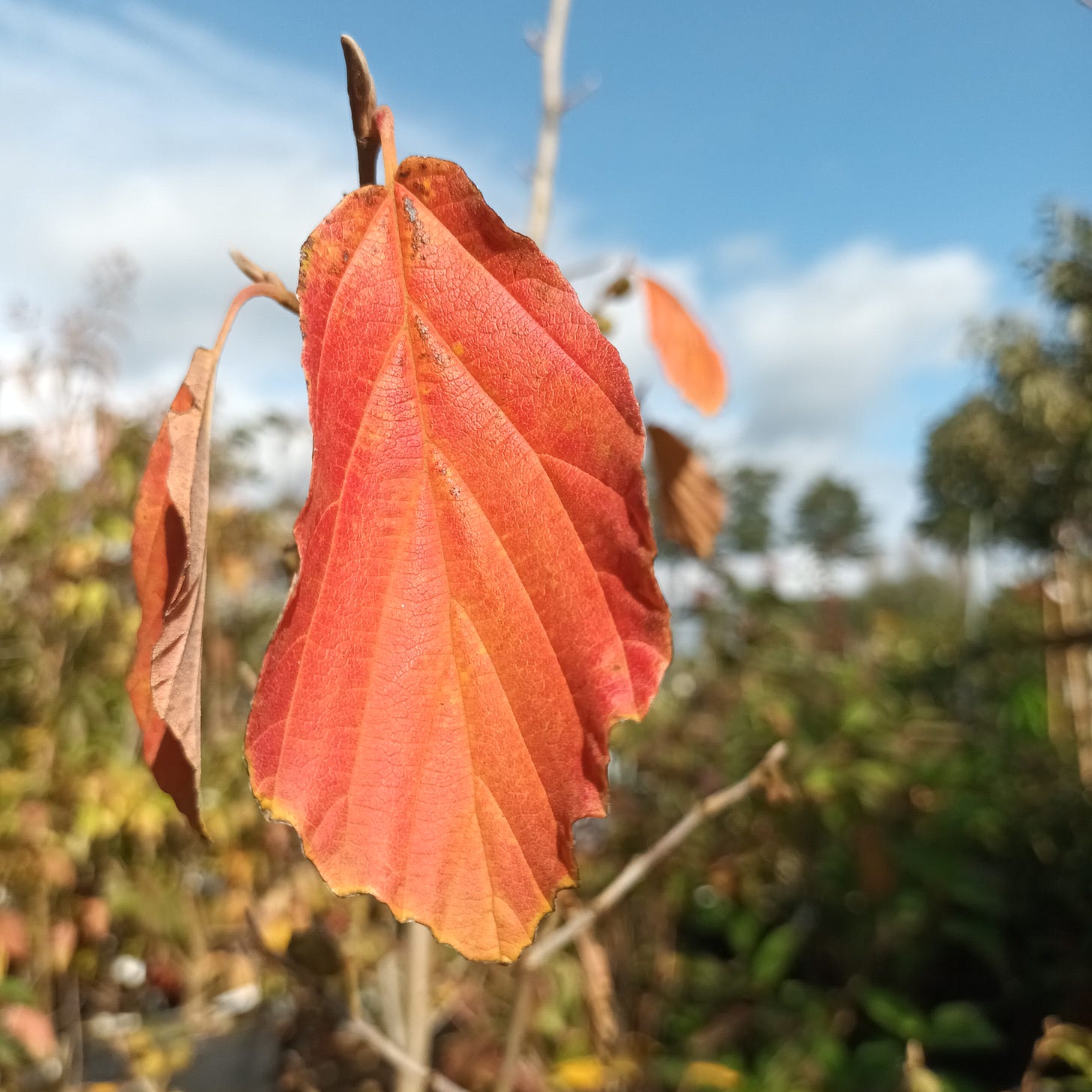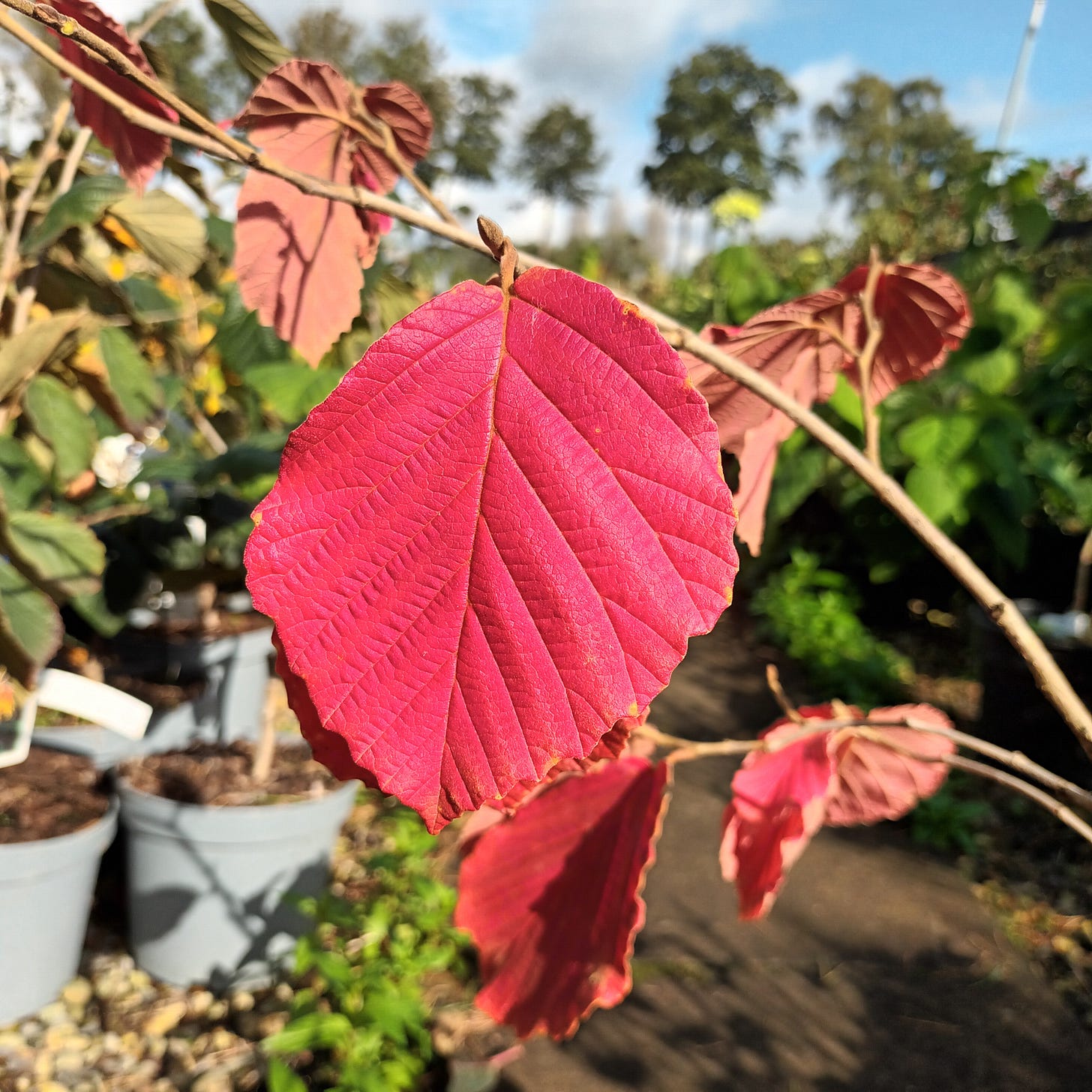The Witch in Autumn
A fine grey mist hung over everything this morning, dripping from wet leaves and browning stems. In the shops, there are autumn displays with orange pumpkins and red-and-yellow leaves. I went, a bit doubtfully, to find their living counterparts in the nursery. But as I did so, the sun broke through and the mist lifted, and it turned into one of those perfect October days when the blue sky seems to designed to be a backdrop to blazing autumn leaves.
The witchhazel - hamamelis - is one of my favourite plants. Most varieties are slow-growing shrubs, suitable for small gardens. In spring and summer it’s just a reliable backdrop: stems of large green leaves, slightly resembling those of whitebeam, or over-large apple, but darker than both. In autumn, though, those leaves turn the colours of a New England fall - the colours we associate with autumn but don’t always seem in all their vibrancy in our own October gardens. ‘Diane’ is a variety whose leaves turn a beautiful clear pink, almost exactly like the colour of the husks of Spindleberry (euonymus europaeus). ‘Westerstede’ has deep, butter-yellow leaves, deeply incised so that their shadows glow golden. ‘Arnold Promise’ and ‘Jelena’ both turn shades of rusty orange and yellow, and many varieties turn colour in such a way that the margins of each leaf contast with its centre: yellow on orange; orange on red.
These burnished, flame-like colours make you think that the ‘witch’ in witchhazel might be something to do with Halloween, with bonfires and the sinister side of history. But ‘witch’ comes from the same root as the ‘wych’ in ‘wych-elm’: a wood that is pliant and easily bent, from the Anglo-Saxon word wice. Witchhazel wood snaps in a fire, bad-tempered; it is not good wood to burn, but as living wood it flexes and springs back. Despite the etymology, it’s hard not to believe these plants are a little bit magic: in late winter, they will burst into seemingly unnatural blossoms, held on bare twigs, in flame colours even brighter than their autumn leaves. These flowers are tiny clusters of crimped tassels, like paper streamers in miniature, often likened in appearance to lemon zest.
All witchhazel like well-drained soil, not too chalky. They will tolerate some shade, but prefer the sun: they look especially good planted where the low, slanting rays of the dying year can glow through their beautiful autumn leaves and winter flowers.
***
Check us out on Instagram: https://www.instagram.com/vertigrowplant/
Vertigrow Plant Nurseries, Lawnswood House, Malton Road, York, YO32 9TL







